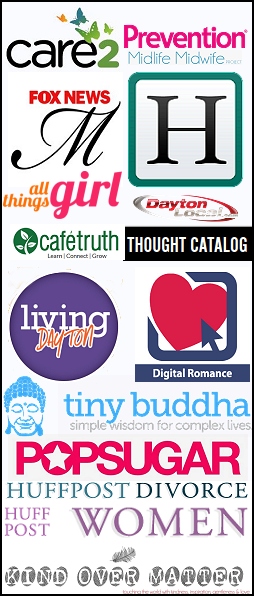The wellness landscape is rapidly evolving, moving beyond the idea of simply being disease-free to embracing a holistic approach that integrates physical, mental, and emotional health. Cultural perceptions, lifestyle choices, environmental factors, and advances in health technology are shaping this shift, with greater emphasis on prevention, lifestyle changes, and mindful decision-making as part of modern treatments.
Today’s journey to wellness is multifaceted, combining medical innovations, beauty treatments, and balanced lifestyle practices to promote both confidence and well-being. Modern treatments and personalized care plans empower individuals to take control of their health, creating a more comprehensive and inclusive approach to living healthier, more fulfilling lives.
Shifting Definitions of Wellness
Wellness has evolved from being defined as the absence of disease to a holistic concept that integrates physical health, emotional balance, and personal confidence. This shift is reflected in the growing consumer demand for wellness solutions, with the global wellness market projected to reach $1.8 trillion in 2024. Surveys show that more than half of US consumers, along with over 80% in the US, UK, and China, are prioritizing wellness more than before, particularly among younger generations.
Modern consumers now view healthcare, technology, and beauty as interconnected parts of their wellness journey. There is a clear preference for clinically proven products over those simply labeled natural, with nearly half of consumers in the US and UK prioritizing evidence-based effectiveness. This trend highlights the growing influence of healthcare providers, whose recommendations play a vital role in shaping consumer choices.
Mental health and emotional well-being have also become central to the wellness movement, recognized as inseparable from physical health and confidence. In this new era, individuals are empowered to take proactive steps—through medical treatments, beauty innovations, and mindful lifestyle choices—toward achieving a balanced and fulfilling state of overall well-being.
Inner Health as the Foundation of Wellbeing
Inner health is increasingly recognized as the cornerstone of long-term wellness. Resolving internal health issues is key to navigating life’s challenges and reaching one’s potential. The World Health Organization defines mental well-being and brain health as fundamental to inner health, underscoring their importance in overall wellness.
Investing in inner health initiatives can yield significant societal benefits, particularly in promoting diversity and inclusion. A strong foundation of inner health empowers individuals to contribute meaningfully to their communities, fostering a sense of belonging and purpose. This focus on inner health addresses a widespread crisis, especially among young adults facing uncertainty and mental health challenges.
Medical innovations are reshaping treatment options and providing hope for better health outcomes. For example, advancements in pancreas treatment in Singapore are revolutionizing care for individuals with pancreatic conditions, offering new possibilities for improved health outcomes. These advancements exemplify how modern treatments can address internal health issues, contributing to overall well-being.
This approach emphasizes patient-centered care and empowerment by promoting self-management and health literacy, enabling individuals to take an active role in their health journey through education and shared decision-making. By focusing on preventive care, disease management, and overall wellness, it improves health outcomes while reducing chronic illness. At the same time, the growing emphasis on inner health highlights the importance of mental and emotional well-being, encouraging practices that build resilience and balance for a more fulfilling life.
The Role of Beauty in Self Care
Outer beauty is an important aspect of self-care, with beauty rituals offering a powerful boost to self-confidence, self-acceptance, and emotional well-being. These practices not only provide a calming escape from the stresses of daily life but also create moments of reflection and mindfulness in a fast-paced world. Investing in small luxuries and daily routines fosters a sense of personal value, while beauty rituals tied to significant life events strengthen identity and build connections across generations. Ultimately, the pursuit of beauty encourages creativity, self-expression, and the freedom to define individual standards of worth.
Personalized beauty treatments, like those from Hairloom, can boost confidence and overall wellness. These treatments provide psychological benefits, improving self-image and helping individuals cope with life’s challenges. Investing in beauty as self-care enhances well-being and fosters a positive self-image.
The role of beauty in self-care extends beyond superficial appearance. It’s about nurturing oneself and enjoying rituals that make us feel good. This holistic approach to beauty and wellness recognizes the interconnectedness of inner health and outer self-care, creating a balanced path to well-being.
Technology in Aesthetic Treatments
Technology is transforming aesthetic treatments, making non-invasive procedures more accessible and integral to personal wellness. Innovations like the V Beam Laser help individuals address concerns such as redness or uneven skin tone, fitting into the larger idea of wellness beyond just physical health.
AI-driven tools and digital imaging are transforming aesthetic procedures by analyzing skin and facial structures to deliver highly personalized treatments through machine learning. This customization enhances patient satisfaction, provides greater control over outcomes, and allows for more precise treatment planning with simulations and tailored recommendations.
Technological innovations such as fractional CO2 lasers for collagen stimulation, RF skin tightening for non-surgical firmness, cryolipolysis (CoolSculpting) for fat reduction, and microneedling with PRP for accelerated healing are making aesthetic treatments more effective and accessible. Together, these advancements highlight how AI and modern technology are reshaping aesthetics to support both confidence and overall well-being.
Integrating Health and Beauty into Daily Life
More people today are blending medical care, preventive health, and beauty rituals into their daily routines, creating a holistic path to wellness that nurtures both inner strength and outer confidence. With 58% of U.S. consumers increasing their focus on wellness in the past year, this trend reflects a growing recognition of health as a balance of care, prevention, and self-expression.
Advancements in technology are making wellness more accessible, with at-home health testing kits simplifying personal health monitoring and nearly half of consumers using wearable devices to track fitness, e-health, and beauty habits. This integration of digital tools empowers individuals to take greater control of their well-being and align health practices with personal goals.
Consumers are also shifting toward products tailored to their specific needs, favoring clinically proven ingredients that deliver real results in both health and beauty. By adopting personalized nutrition, preventive medicine, and modern beauty treatments, individuals are building routines that support long-term wellness, disease prevention, and a balanced lifestyle that harmonizes inner health with outer beauty.
Looking Ahead at the Future of Wellness
Looking ahead, the future of wellness promises to be more advanced and accessible. Consumers are prioritizing wellness, seeking science-based solutions tailored to their individual needs. The global wellness market, estimated at $1.8 trillion, reflects this robust consumer interest in diverse wellness sectors.
Advancements in biomonitoring and wearable technology are revolutionizing personalized health insights, driving greater consumer engagement in wellness and highlighting key trends such as the preference for clinically proven ingredients, the renewed influence of doctor recommendations, and the need to counter misinformation from influencer marketing. As wellness evolves with more advanced and accessible treatments, the focus is shifting toward a holistic approach that balances inner health with outward care, integrating medical innovations, beauty solutions, and mindful lifestyle choices. This comprehensive perspective empowers individuals to pursue meaningful, sustainable wellness journeys that strengthen both confidence and overall well-being.
Summary
In summary, the evolving wellness landscape embraces a holistic view of health that blends modern treatments, beauty innovations, and lifestyle choices to support physical well-being, emotional balance, and personal confidence. By prioritizing inner health as the foundation of long-term wellness and recognizing the role of beauty in enhancing self-care, individuals can achieve a balanced approach that benefits both personal growth and community contribution. Looking ahead, advancements in medical and beauty treatments will make wellness more accessible and sustainable, ensuring it is no longer just about avoiding illness but about achieving overall fulfillment and a healthier, more confident life.
Frequently Asked Questions
How has the definition of wellness evolved over the years?
The definition of wellness has evolved to encompass a holistic approach that includes not only physical health but also emotional balance and personal confidence, moving beyond just the absence of disease. This progression reflects a more comprehensive understanding of overall well-being.
What role does inner health play in overall well-being?
Inner health is crucial for overall well-being as it forms the foundation of long-term wellness by addressing mental and emotional challenges, ultimately empowering individuals to lead healthier, more fulfilling lives.
How do beauty rituals contribute to self-care?
Beauty rituals significantly contribute to self-care by enhancing self-confidence and emotional well-being, serving as a mental refuge from stress while fostering creativity and self-expression. Prioritizing these rituals can lead to a more balanced and fulfilling life.
What technological advancements are transforming aesthetic treatments?
AI-driven tools, digital imaging, and advanced laser therapies are significantly enhancing the effectiveness, personalization, and accessibility of aesthetic treatments. These technological advancements are shaping the future of the industry.
How can individuals integrate health and beauty into their daily routines?
Individuals can integrate health and beauty into their daily routines by merging medical care, preventive health measures, and beauty rituals, fostering a holistic approach to overall wellness. This integration promotes both inner strength and outer confidence.
Do you need some strategies to help you make self-care a priority?
Snag a free workbook and get inspiration on all the ways to love your life even more.
>>Click Here to Discover Additional Articles on Strategies to Get Your Life on Track <









